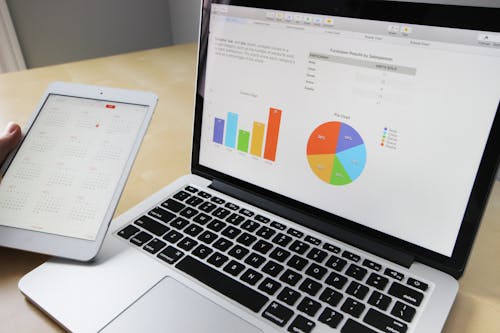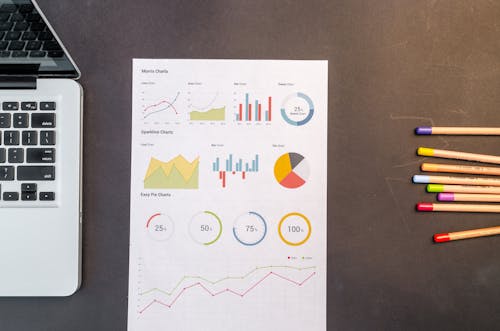
Image Source: FreeImages
Introduction to Data Cleansing
As businesses continue to rely heavily on data-driven decision-making, the importance of maintaining data integrity cannot be overstated. Without accurate and reliable data, organizations risk making flawed decisions that can have far-reaching consequences. This is where data cleansing techniques come into play. In this comprehensive guide, I will explore the various automated methods and tools available for data cleansing, helping you unlock the power of maintaining data integrity.
Importance of Data Integrity in Business
Data integrity is the foundation upon which businesses build their strategies. When data is clean and accurate, decision-makers can trust the insights derived from it. On the other hand, if data quality is compromised, it can lead to erroneous conclusions and misguided actions.

Image source: Pexels.
Poor data integrity can result in financial losses, damaged reputation, and missed opportunities. Therefore, investing in data cleansing techniques is essential for organizations to ensure the reliability and credibility of their data assets.
Common Data Quality Issues
Before diving into the world of data cleansing, it’s important to understand the common data quality issues that organizations face. These issues can range from missing values and inconsistent formats to duplicate records and outdated information. Inaccurate data can arise from various sources, including human error, system glitches, and data migrations. By identifying these issues, businesses can take proactive steps to address them through data cleansing techniques.
Manual vs Automated Data Cleansing Techniques
Traditionally, data cleansing was a manual process that involved a significant amount of time and effort. However, with the advent of automated data cleansing techniques, businesses can now streamline the process and achieve more accurate results in a shorter span of time.

Image sourcee: Pexles.
While manual techniques may still be applicable in certain scenarios, automation offers several advantages such as increased efficiency, scalability, and reduced human error. In the next section, we will explore an overview of the various automated data cleansing methods and tools available.
Overview of Automated Data Cleansing Methods and Tools
Automated data cleansing methods and tools leverage advanced algorithms and machine learning techniques to analyze, clean, and enhance data quality. These tools can handle large volumes of data efficiently and provide real-time insights, enabling organizations to make data-driven decisions with confidence. Some popular automated data cleansing methods include data profiling and analysis, data standardization and normalization, duplicate record removal, data error validation and correction, and data enrichment techniques. Let’s delve deeper into each of these methods.
Data Profiling and Analysis for Data Cleansing
Data profiling involves assessing the quality and structure of data to identify anomalies and inconsistencies. By analyzing data patterns, data profiling tools can detect missing values, outliers, and formatting errors.

Image source pexels.
This allows organizations to gain a comprehensive understanding of their data and prioritize areas that require cleansing. By employing data profiling and analysis techniques, businesses can save time and effort by focusing their cleansing efforts on the most critical areas.
Data Standardization and Normalization Techniques
Data standardization is a critical step in the data cleansing process. It involves transforming data into a consistent and uniform format, ensuring compatibility across different systems and applications. Normalization techniques further enhance data quality by eliminating redundancies and inconsistencies. By standardizing and normalizing data, organizations can improve data accuracy, reduce duplication, and facilitate seamless data integration.
Removing Duplicate Records in a Dataset
Duplicate records can significantly impact data integrity and skew analytical results. Automated data cleansing tools employ sophisticated algorithms to identify and remove duplicate records from a dataset.

Image source pexels.
By eliminating duplicates, organizations can avoid erroneous calculations, improve data accuracy, and enhance overall data quality. This step is particularly crucial when dealing with customer data, as duplicate records can lead to duplicate communications and poor customer experiences.
Validating and Correcting Data Errors
Data errors can occur due to various reasons, such as input mistakes, system glitches, or data migrations. Automated data cleansing tools can validate data against predefined rules or reference datasets to identify errors. These tools can automatically correct common errors, such as misspellings, inconsistent formats, and invalid entries.

Image source pexels.
By validating and correcting data errors, organizations can ensure data accuracy and reliability, enabling more informed decision-making.
Enhancing Data Quality with Data Enrichment Techniques
Data enrichment techniques involve enhancing existing datasets with additional information from reliable external sources. Automated data cleansing tools can access and integrate relevant data from various sources, such as public databases, social media, and third-party providers. This enriched data can provide valuable insights, improve customer profiling, and help organizations gain a competitive edge. Data enrichment is particularly beneficial in industries like marketing, where accurate and up-to-date customer information is crucial.
Best Practices for Implementing Data Cleansing
Implementing data cleansing techniques requires careful planning and execution. Here are some best practices to consider:
- Define Clear Objectives: Clearly define the goals and outcomes you want to achieve through data cleansing. This will help you prioritize efforts and allocate resources effectively.
- Establish Data Quality Metrics: Define measurable data quality metrics to assess the effectiveness of your data cleansing efforts. Regularly monitor and report on these metrics to track progress.
- Invest in the Right Tools: Choose automated data cleansing tools that align with your specific requirements and budget. Consider factors such as scalability, ease of use, and compatibility with existing systems.
- Create a Data Cleansing Strategy: Develop a comprehensive strategy that outlines the step-by-step process for data cleansing. Assign responsibilities, set timelines, and establish data governance practices.
- Ensure Data Privacy and Security: Maintain data privacy and security throughout the data cleansing process. Adhere to relevant data protection regulations and implement robust security measures to protect sensitive information.
Case Studies of Successful Data Cleansing Projects
To further illustrate the benefits of data cleansing, let’s explore two real-life case studies:
- Company X: Company X, a multinational retailer, experienced a decline in customer satisfaction due to inaccurate inventory data. By implementing automated data cleansing tools, they were able to identify and rectify discrepancies in their inventory records. This led to improved stock management, reduced out-of-stock instances, and increased customer satisfaction.
 Image source pexels.
Image source pexels. - Company Y: Company Y, a financial services provider, struggled with duplicate customer records across multiple systems. This resulted in confusion, operational inefficiencies, and compliance issues. By leveraging automated data cleansing techniques, they successfully eliminated duplicate records, resulting in streamlined operations, improved data accuracy, and enhanced regulatory compliance.
.
Image source pexels.
Future Trends in Data Cleansing
As technology advances and data volumes continue to grow exponentially, the field of data cleansing is expected to witness significant developments. Some future trends to watch out for include:
- Artificial Intelligence (AI) and Machine Learning (ML): AI and ML algorithms will play a crucial role in automating data cleansing processes and improving accuracy.
- Real-time Data Cleansing: With the increasing demand for real-time insights, data cleansing techniques will need to adapt to deliver immediate results without compromising quality.
 .
. - Data Governance and Compliance: As data privacy regulations become more stringent, organizations will focus on implementing robust data governance frameworks to ensure compliance during the data cleansing process.
Conclusion
Data cleansing is an integral part of maintaining data integrity in today’s data-driven world. By investing in automated data cleansing techniques, organizations can unlock the power of clean and reliable data. From data profiling and analysis to removing duplicate records and enhancing data quality through enrichment techniques, the possibilities are vast. By following best practices and learning from successful case studies, businesses can optimize their data cleansing efforts and make informed decisions based on accurate and trustworthy data. As we look towards the future, the evolution of technology will continue to shape the field of data cleansing, enabling organizations to stay ahead in the era of data-driven decision-making.
Contact us JBM Digital to take your business to the next level today with impeccable accuracy.

 Image source pexels.
Image source pexels. .
.
Recent Comments